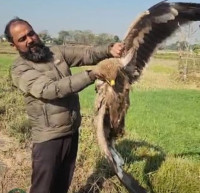National
Plan to revive Bagmati taking shape
Bagmati River, which has been a repository for sewage and drain, would have running water even during the dry season with the Bagmati River Basin Improvement Project (BRBIP) set to complete the first of multiple dams it has planned to restore the holy river’s lost glory in a year.
Anup Ojha
Bagmati River, which has been a repository for sewage and drain, would have running water even during the dry season with the Bagmati River Basin Improvement Project (BRBIP) set to complete the first of multiple dams it has planned to restore the holy river’s lost glory in a year.
The dam with a storing capacity of 85.3 million litres of water, is under construction at the Shivapuri Nagarjun National Park, just above Sundarijal. The dam will be used to harvest rain water and release it into the river when the water level in the river dips. The total cost for the construction of dam is estimated at Rs 600 million.
“We have planned to release 40 litres of water per second during the dry season,” said Rajesh Prasad Singh, director of the Bagmati River Basin Improvement Project (BRBIP). The project comes under the High Powered Committee for Integrated Development of the Bagmati Civilisation (HPCIDBC), a local body of Ministry of Urban Development.
According to him, the BRBIP is also planning to build another reservoir with idential capacity in the nearby area.
Once the dam comes into operation, it is expected to spring back the Bagmati river into life. “We are hopeful adding water to Bagmati will revive the lost aquatic life,” said Singh.
However, this is not the first time that the idea of pumping water into rapidly-drying Bagmati River has been tried. In 2015, the Ministry of Urban Development had announced that certain amount of water pumped by the Melamchi Water Supply Project would to released into the Bagmati river.
Officials at the HPCIDBC said the water supplied to the treatment plant in Sundarijal for the trail period would be released into Bagmati to clean the river. The government targets to pump water from Melamchi River to the Capital sometime between October and September this year.
Until Saturday, the Melamchi Water Supply Project (MWSP) has laid 533 kilometres of pipeline in Kathmandu Valley out of the total 670 kilometres.




 19.12°C Kathmandu
19.12°C Kathmandu.jpg)














